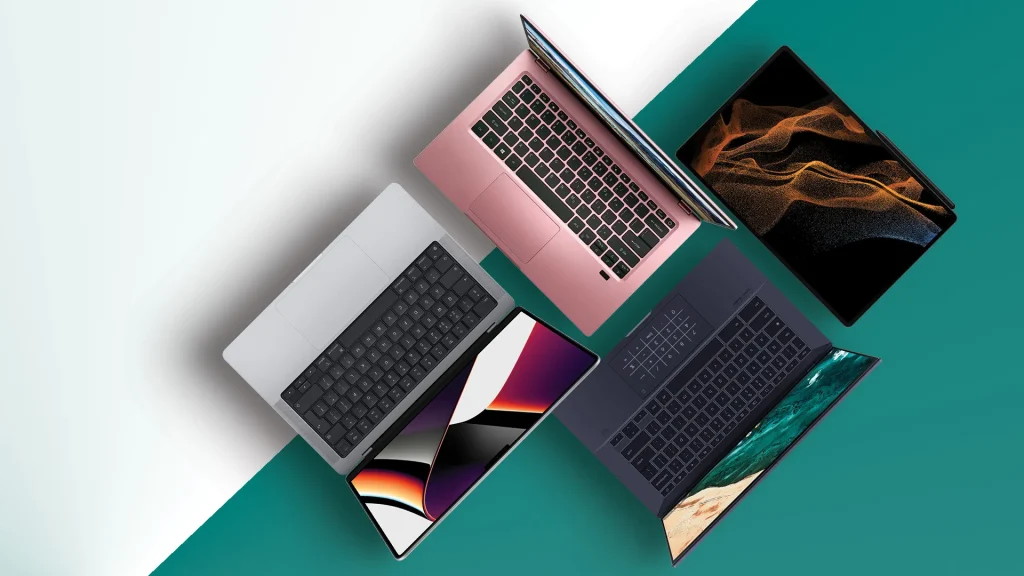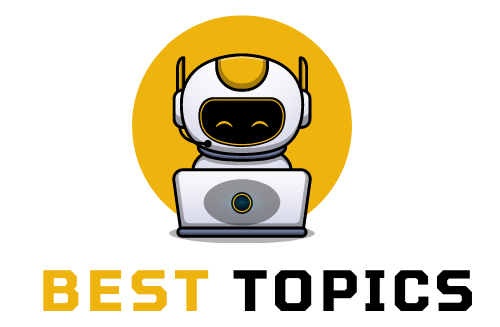Blog
Your Guide to Choosing the Right Laptop
In today’s digital world, a laptop is an essential tool for work, study, gaming, or entertainment. With countless models and specifications on the market, finding the perfect laptop can feel overwhelming. Whether you’re a student, a professional, or a casual user, understanding your needs is key to making the right choice.
This comprehensive guide will walk you through everything you need to know about choosing the right laptop, from identifying your requirements to understanding the key features and exploring top recommendations.
Why Choosing the Right Laptop Matters
A laptop is a significant investment, and the right one can enhance productivity, creativity, and entertainment. A poorly chosen laptop, however, can lead to frustration and hinder your ability to perform tasks effectively. Here’s why choosing the right laptop matters:
- Improved Efficiency: A well-suited laptop helps you complete tasks faster and more efficiently.
- Long-Term Value: Investing in a durable and reliable laptop saves money in the long run.
- Enhanced Experience: The right device makes tasks like gaming, designing, or multitasking smoother and more enjoyable.
Step 1: Identify Your Needs
Before diving into specifications and features, understand what you’ll primarily use your laptop for. Here are common use cases:

1. For Students
- Primary Tasks: Writing essays, taking notes, attending online classes, and light multitasking.
- Ideal Features: Lightweight, affordable, and long battery life.
- Suggested Budget: $400–$800.
2. For Professionals
- Primary Tasks: Office work, video conferencing, multitasking, and managing large files.
- Ideal Features: Powerful processors, ample storage, and a sleek design for portability.
- Suggested Budget: $800–$1,500.
3. For Gamers
- Primary Tasks: Playing high-resolution games, streaming, and using resource-heavy applications.
- Ideal Features: Dedicated GPU, high refresh rate, and efficient cooling.
- Suggested Budget: $1,200–$3,000.
4. For Creatives
- Primary Tasks: Graphic design, video editing, animation, and 3D modeling.
- Ideal Features: High-resolution displays, powerful CPUs/GPUs, and color accuracy.
- Suggested Budget: $1,500–$3,500.
5. For Casual Users
- Primary Tasks: Browsing, streaming, and using basic apps.
- Ideal Features: Affordable, simple design, and good battery life.
- Suggested Budget: $300–$600.
Step 2: Understand Key Laptop Features
When shopping for a laptop, focus on the following features to ensure it meets your needs:
1. Processor (CPU)
The CPU determines your laptop’s performance. Popular choices include:
- Intel Core i3/i5 or AMD Ryzen 3/5: Great for everyday use.
- Intel Core i7/i9 or AMD Ryzen 7/9: Ideal for gaming, design, and heavy multitasking.
- Apple M1/M2 Chips: Known for their efficiency and performance in MacBooks.
2. Graphics (GPU)
A dedicated GPU is essential for gaming, video editing, and 3D modeling.
- Integrated Graphics: Sufficient for everyday tasks and casual gaming.
- NVIDIA GeForce RTX or AMD Radeon RX: Best for high-performance gaming and creative work.
3. RAM
- 4GB: Minimum for basic tasks.
- 8GB: Standard for most users.
- 16GB+: Recommended for heavy multitasking, gaming, and creative tasks.
4. Storage
- HDD (Hard Disk Drive): Budget-friendly but slower.
- SSD (Solid-State Drive): Faster and more reliable; recommended for modern laptops.
- Hybrid (SSD + HDD): Combines speed and storage capacity.
5. Display
- Resolution: Full HD (1920 x 1080) is standard; 4K is ideal for creatives.
- Size: 13–15 inches for portability; 16–17 inches for more screen real estate.
- Panel Type: IPS for wide viewing angles, OLED for vibrant colors.
6. Battery Life
Look for at least 8–10 hours for portability. Gaming laptops typically have shorter battery life due to high power consumption. Look for at least 8–10 hours for portability. Gaming laptops typically have shorter battery life due to high power consumption.
7. Portability
- Weight: Lightweight laptops under 3 pounds are ideal for travel.
- Build Quality: Durable materials like aluminum ensure longevity.
8. Connectivity
Ensure the laptop has sufficient ports:
- USB-A and USB-C for accessories.
- HDMI for external monitors.
- SD card readers for photographers.
Step 3: Choose the Right Operating System
Your laptop’s operating system (OS) significantly impacts its user experience. Popular options include:

1. Windows
- Versatile and compatible with most software.
- Ideal for gamers, professionals, and casual users.
2. macOS
- Found exclusively on Apple MacBooks.
- Best for creatives and users in the Apple ecosystem.
3. ChromeOS
- Lightweight and affordable.
- Great for students and users who rely on web-based apps.
Step 4: Explore Top Laptop Models
Here’s a list of highly recommended laptops for different user types. Here’s a list of highly recommended laptops for different user types:
For Students
- Apple MacBook Air (M1): Lightweight with long battery life.
- Acer Swift 3: Budget-friendly with great performance.
- HP Pavilion x360: Convertible design for added versatility.
For Professionals
- Dell XPS 13 Plus: Compact and powerful with a stunning display.
- Lenovo ThinkPad X1 Carbon: Durable and reliable for business use.
- Microsoft Surface Laptop 5: Sleek design with excellent productivity features.
For Gamers
- ASUS ROG Zephyrus G14: Compact gaming powerhouse.
- Razer Blade 15: High performance with a premium design.
- MSI GP66 Leopard: Ideal for competitive gaming.
For Creatives
- Apple MacBook Pro (M2 Max): Unmatched performance for video editing and 3D rendering.
- Dell XPS 17: Large 4K display with powerful specs.
- ASUS ProArt StudioBook 16 OLED: Tailored for designers and content creators.
For Casual Users
- Chromebook Spin 713: Lightweight and easy to use.
- Lenovo IdeaPad 3: Affordable and reliable for everyday tasks.
- HP Stream 14: Budget-friendly with essential features.
Step 5: Set a Budget
Understanding your budget helps narrow your options:
- Budget ($300–$600): Great for students and casual users.
- Mid-Range ($700–$1,500): Ideal for professionals and light gamers.
- Premium ($1,600–$3,500): Best for creatives and hardcore gamers.
Step 6: Where to Buy
Look for trusted retailers with competitive prices:
- Online: Amazon, Best Buy, Newegg, and manufacturer websites.
- In-Store: Apple, Microsoft, or local electronics stores.
- Refurbished: Save money by buying certified refurbished laptops from trusted sources.
Final Tips for Choosing the Right Laptop
- Read Reviews: Research user and expert reviews to ensure quality.
- Test in Store: Try laptops in-store to check for build quality and comfort.
- Check Warranty: Opt for models with extended warranties for peace of mind.
- Think Long-Term: Choose a laptop that can handle your needs for the next 3–5 years.
Conclusion
Choosing the right laptop doesn’t have to be overwhelming. By understanding your needs, focusing on essential features, and exploring the best options for your budget, you can find the perfect device to match your lifestyle and work requirements. Start your search today and invest in a laptop that will empower you to work, play, and create without limitations!

